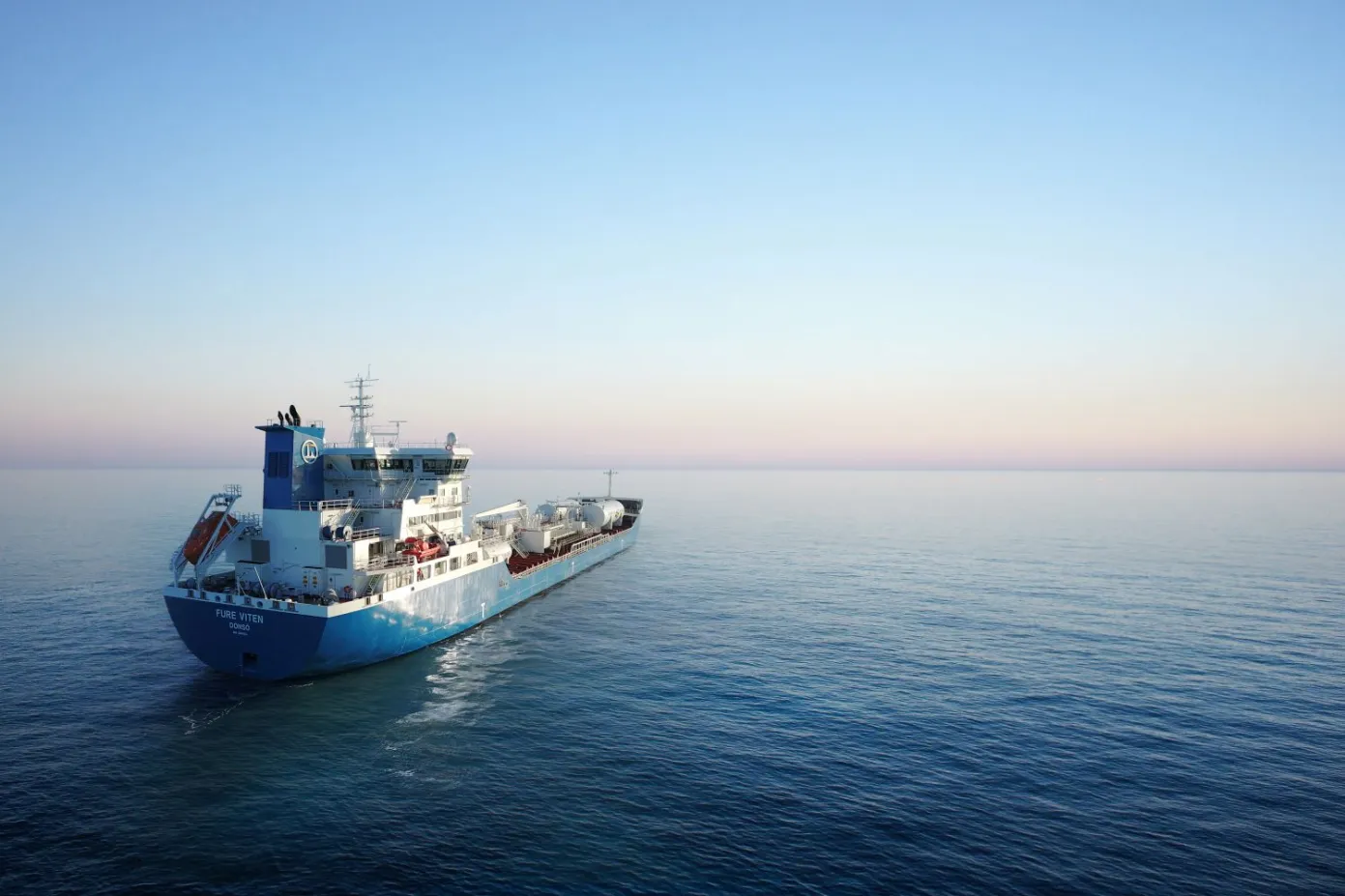US Navy Secretary John Phelan has revealed plans to propose a new partnership with Japan focused on dual-use shipbuilding, designing commercial ships that can quickly serve military roles if needed.
Speaking to Nikkei Asia, Phelan said that expanding joint shipbuilding efforts is essential to strengthen deterrence against China.
Phelan, who arrived in Japan on Sunday night, plans to deliver this message personally to Japanese Defense Minister Gen Nakatani during their meeting on Monday.
He believes looking at “all options” to boost combined shipbuilding capabilities is crucial.
Before his trip, during an interview at his Pentagon office, Phelan highlighted how China has been deliberately designing its commercial vessels to meet military standards, allowing for fast conversion in times of conflict.
He said that the US and its allies are not doing the same and discussed the need for both nations to embed military applications into their ship designs.
Phelan also pointed out that during both World Wars, commercial ships played significant support roles. He said it is time to prepare for similar scenarios, as commercial vessels would again be vital during any conflict.
Tom Shugart, an expert on China’s military at the Center for a New American Security think tank, explained that in China, even commercial vessels are built to defense standards.
He gave the example of the Bohai Ferry Company, whose ferries are constructed strong enough to carry tanks and are ready to receive military equipment if needed.
Shugart said such modifications make Chinese commercial ships much more useful in wartime compared to regular civilian vessels.
Phelan said he hopes US-Japan cooperation in shipbuilding will move beyond just maintenance, repair, and overhaul (MRO), where the two countries already collaborate.
He said that future shipbuilding projects should combine commercial and defense needs from the start.
During his stay, Phelan will visit Japan Marine United’s Isogo Works shipyard in Yokohama, which is known for developing new technologies and shipbuilding solutions.
After Japan, he will travel to South Korea, where he is scheduled to visit multiple shipyards as part of his mission.
A key part of Phelan’s trip is to encourage Japanese and South Korean companies to invest in US shipyards, particularly along the West Coast.
He mentioned that after visiting several East Coast facilities, he found little room to expand capacity there. Therefore, expanding on the West Coast is now a major focus.
Referring to South Korea’s active investment, Phelan pointed out that Hanwha Group recently acquired Philly Shipyard in a $100 million deal.
He also noted that Hyundai Heavy Industries and Huntington Ingalls, a major US military shipbuilder, signed an agreement to explore increasing production in both commercial and defense sectors.
Phelan expressed interest in finding ways to encourage Japanese companies to invest in US shipyards.
He shared that he received a text message from President Donald Trump on Easter Sunday. Trump wished him a happy Easter but also sent a photo of a rusty US warship, urging the Navy Chief to ensure that American naval forces stay competitive.
Phelan described it as a strong reminder of the work ahead. He said it was an easy decision to pick Japan and South Korea as his first overseas destinations.
He added that shipbuilding is crucial to the US Navy’s future and that these two countries are clearly their two most critical allies, while also being leading shipbuilding nations.
The Navy chief warned that the US is at a tipping point. Without immediate action to close the shipbuilding gap with China, it will become extremely difficult to catch up later, he said.
According to the Pentagon’s 2024 China Military Power Report, China’s navy now boats more than 370 ships and submarines, while the US fleet stands at around 295 vessels.
Projections show China could reach a 425 ship fleet by 2030, supported by a massive industrial base that can replace and repair vessels much faster than American shipyards.
A Centre for Strategic and International Studies (CSIS) report also highlighted China’s shipbuilding dominance. In just two decades, China’s global shipbuilding market share increased from 5% to over 50%, while South Korea holds about 29% and Japan about 13%.
On the other hand, the US accounts for a tiny 0.1% of global shipbuilding.
China State Shipbuilding Corporation, the world’s largest shipbuilder, leads the country’s shipbuilding industry with 84 subsidiaries and over 200,000 employees.
In 2024 alone, this Chinese giant built more commercial ship tonnage than the US has built since World War II ended.
Matthew Funaiole, a senior fellow at the CSIS’s China Power Project, advised that the US should not aim to directly match China’s shipbuilding numbers.
Instead, he suggested building up capacity outside China- particularly in Japan, South Korea, and strategic industries like icebreakers and liquefied natural gas carriers-through partnerships.
Phelan highlighted the urgency to get going fast to ensure that the US and its allies maintain a competitive edge in shipbuilding.
Reference: nikkei asia
Do you have info to share with us ? Suggest a correction






